Marram; Moresg part five: Mobile Dunes and Me
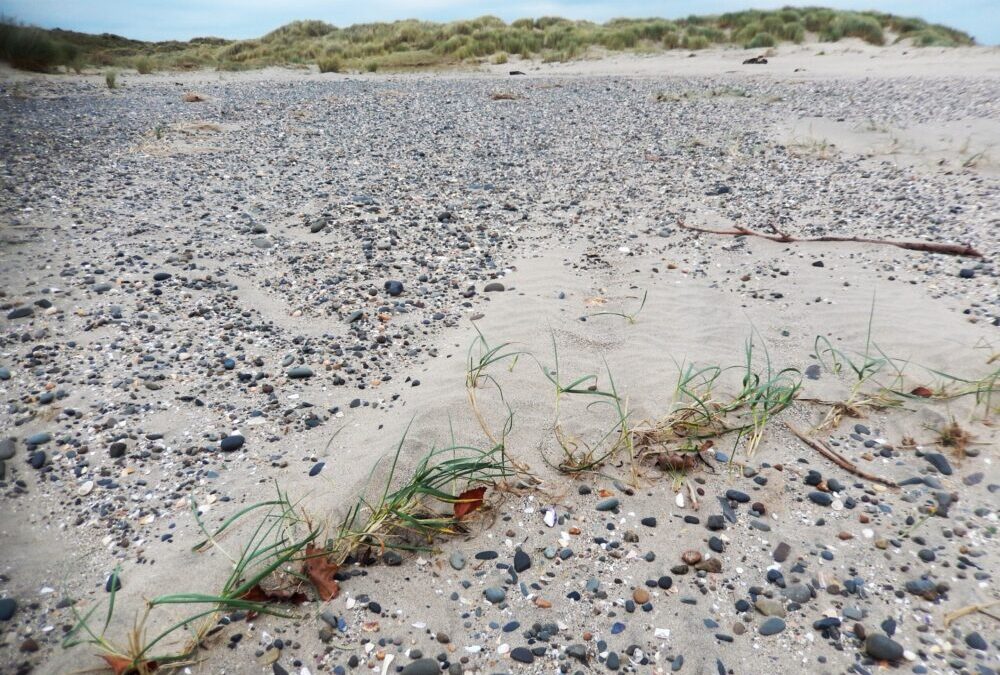
Julie Brominicks
I leave Justin and the disobedient photocopier in the Natural Resources Wales (NRW) visitor centre that everyone including me, very much wants to stay open.
There is visibly more diversity on the Dyfi Nature Reserve which is grazed lightly throughout the year by rabbits and by sheep in winter, than on the adjacent golf course, though marram has shaped them both.
There are birds aplenty in the dune slacks. The scolding of a magpie. Raven-cronk.
Evening primrose
A song thrush looking this way and that from atop a dwarf-willow, a charm of goldfinches swaying on thistles, an evening primrose still in flower although we’re well into November.
Crouching down I see tiny snails creeping up the plantain and marram stems. I can hear the cry of a herring gull and oystercatchers out on the estuary, their bubbling calls drifting towards the visitor centre.
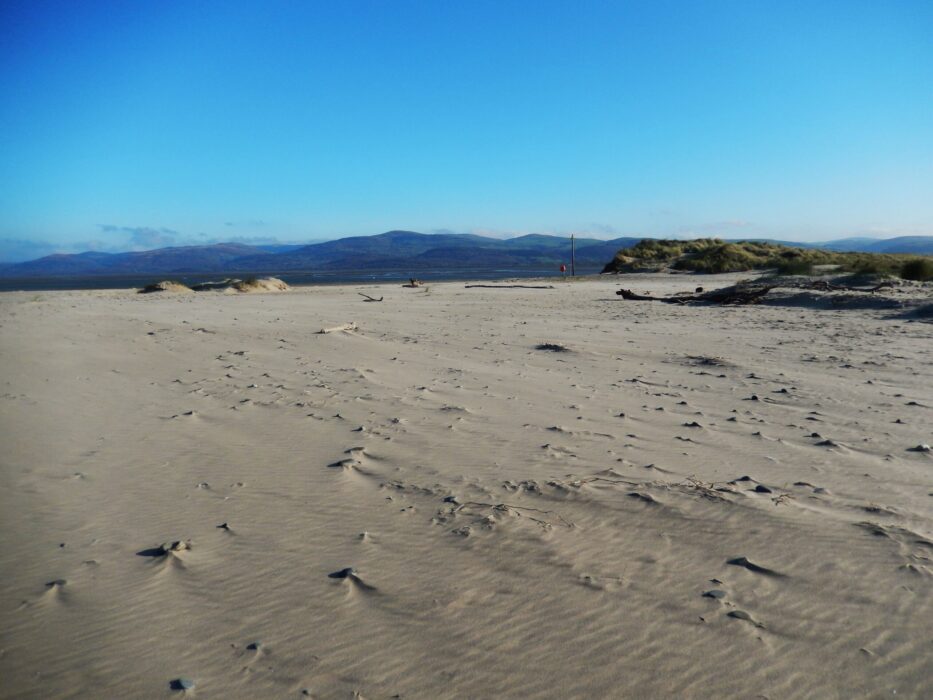
I head into the wind, past the pebbly basin between dunes where ringed plover nest in summer, to North Point where the embryo and mobile dunes are forming and extending into the Dyfi Estuary; where they are at their most dynamic.
Justin told me that sand lizards, reintroduced in 2009 are thriving here having spread to all available habitats on these mobile dunes.
I look hopefully at a line of tracks and a hole; could this be a lizard-hideout? No. These are bird tracks and the probing of a curious beak.
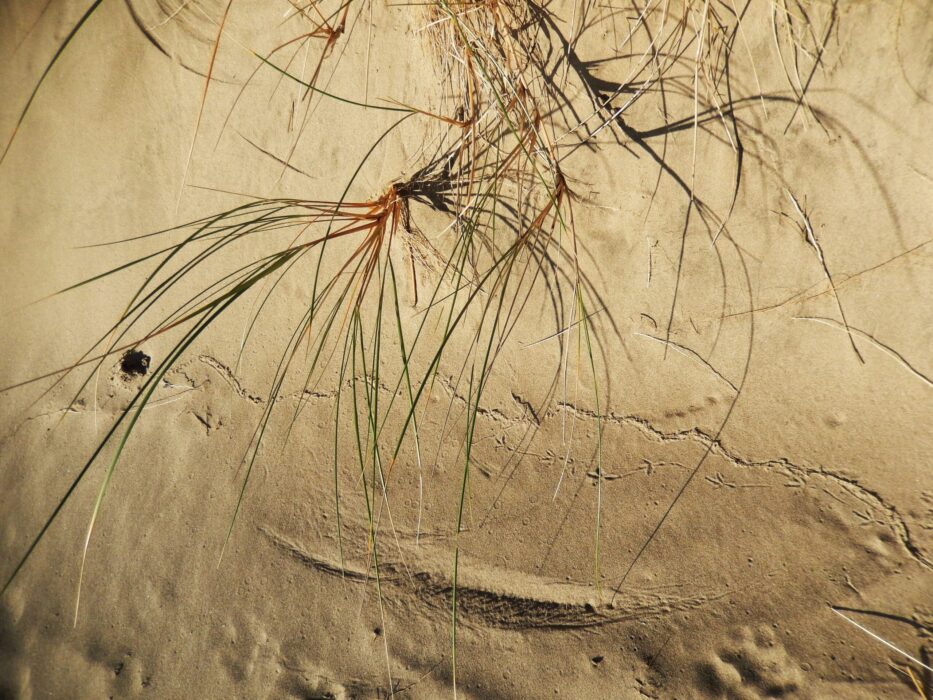
It is late November and the sand lizards are hibernating. The landscape is dynamic alright. Bare and bright, windswept and tide-washed. Raw.
A brilliant energized place, teased today by a bitter wind. I stuff my hands into my gloves and into my pockets, before taking them out to scribble notes or raise my binoculars, then repeat the process.
Storm bank
I stride beyond the dunes onto rippled intertidal sand. The storm-bank beneath is exposed in places; a cobbled floor of pebbles brought by glaciers and longshore-drift stretching out beneath the sand on which mussel and whelk shells are scattered among blobs of dulse and wrack.
At the water’s edge the incoming sea meets the outgoing river. The sand dunes of Aberdyfi seem close across the estuary. Dog-walkers on the beach there clearly visible.
I return to the embryo dunes. This landscape is so active! Nothing like the hinterland of bigger dunes that are knitted so tightly by marram. Here you can see dunes being born.
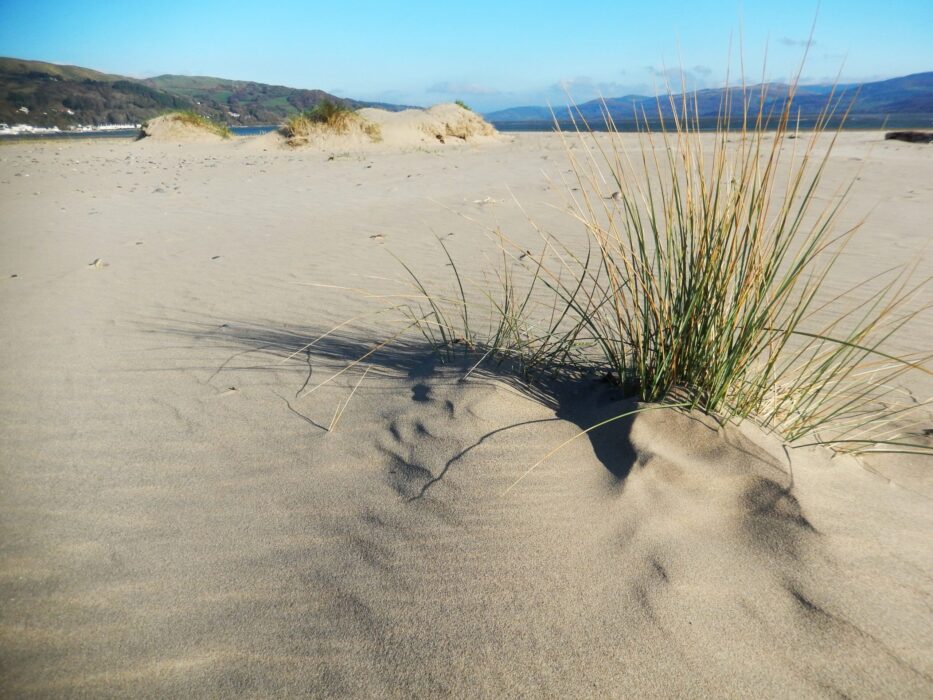
Little drifts of sand building up behind a stick or pebble. Sea rocket and prickly saltwort, the pioneer plants that thrive here, taking root on junior dunes.
These plants are a step more established than spring ephemerals; flowering in late summer, their seeds are distributed along the tideline.
A cold wind whips about my head. There are distant waders on the estuary. Silver light flooding the water. I wedge myself into the marram of a young dune.
These spiky blades sound soft, susurrating so in the wind. Yellowing at the base, marram springs from the sand like eyelashes.
Arcs
The grass-points bend and scribble art on the dune. And here, protruding yellow roots sway back and forth in the breeze, describing arcs in the sand like windscreen wipers.
The sand is cool beneath me. It feels packed and firm but I’m at the edge of the dune system here, it might move again yet. Among the marram stems I see the tiny star-shaped footprints of a weasel.
A miniscule invertebrate beetling along. A fly clinging to a grass-blade as it sways, even in this cold wind. A hundred yards out the tide is coming in. Further out still a line of surf. Wavelets are forcing their way up the estuary.
Single cormorants are incoming, flying low, lighting on a spit upriver.
Wanting to be in the action, I venture again into the wind to where the very smallest dunes are forming. I realise I’m following the marram rhizomes, which are shooting out from the dunes behind me, beneath my feet, beneath the sand.
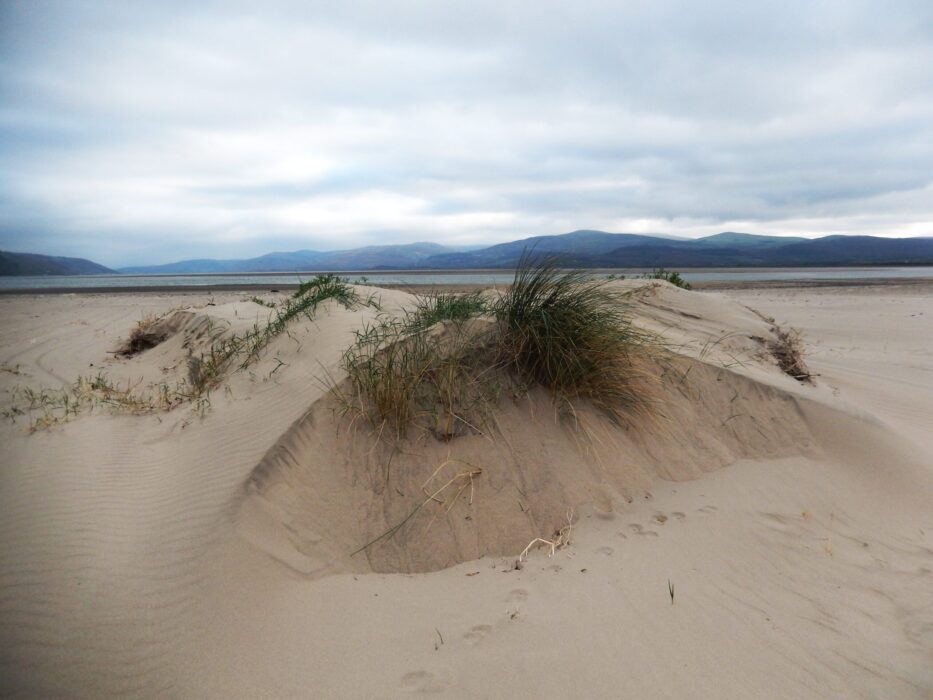
Young grass, behind which tiny sand-hills form, has sprouted along their length. This young grass has trapped windborne oak and beech leaves and the most exquisite feather, loosed possibly by a preening wigeon.
The feather is extraordinary! Diaphanous and shifting with light! (I take it home where it is not so special; something of its life left behind.)
I eat my sandwich with my back to an embryo dune watching wind-ruffled waves. The soughing and bending marram also has a tousled horizon.
I use a spike of it to remove a bit of cheese from my teeth. Further down the spit I see another line of grass sprouting along a rhizome. Below it, roots will be shooting down but progress is gradual.
Justin said most of these embryo dunes get washed away, they won’t stay long.
Like the dunes, I too need to wander at will. I scramble to my feet, brush off the crumbs and pick up my rucksack.
Acknowledgements
Enormous thanks to Freya Canham, Melissa Dhillon, Justin Lyons, and not forgetting Dave Anning whose idea it was to write about marram.
Special thanks also to Jon Gower for editorial guidance and enthusiasm, and to him and Mark Mansfield for giving this series a home at Nation Cymru.
Support our Nation today
For the price of a cup of coffee a month you can help us create an independent, not-for-profit, national news service for the people of Wales, by the people of Wales.





That was a nice read, the life of a sand dune, a tribute to the tenacity of life itself…
Thank you MM, it’s always lovely to hear from you.
Sand dunes were the lowlands of my youth, the stretch from Fairbourne to Ynys… How we escaped drowning, being suffocated deep in our burrows, falling down mine shafts and the dangers of exploring the rivers of gold etc* is testament to the adage ‘a little of what kills you, makes one wary’, most of the time… I can’t end without a book mention: Guy N. Smith, whose ‘Crabs’ series of pulp horror books begins with angry giant crabs coming ashore in those dunes… Take care, the tide can turn very quickly… It has been a treat to see your photographs… Read more »
Wonderful!